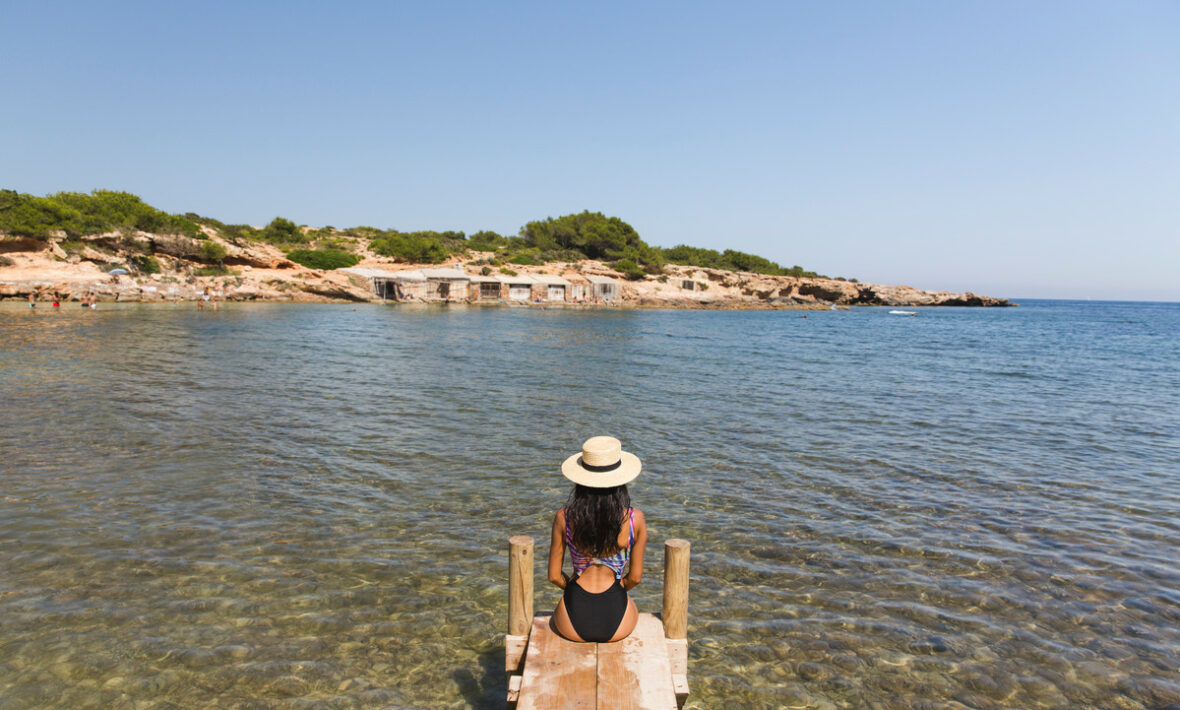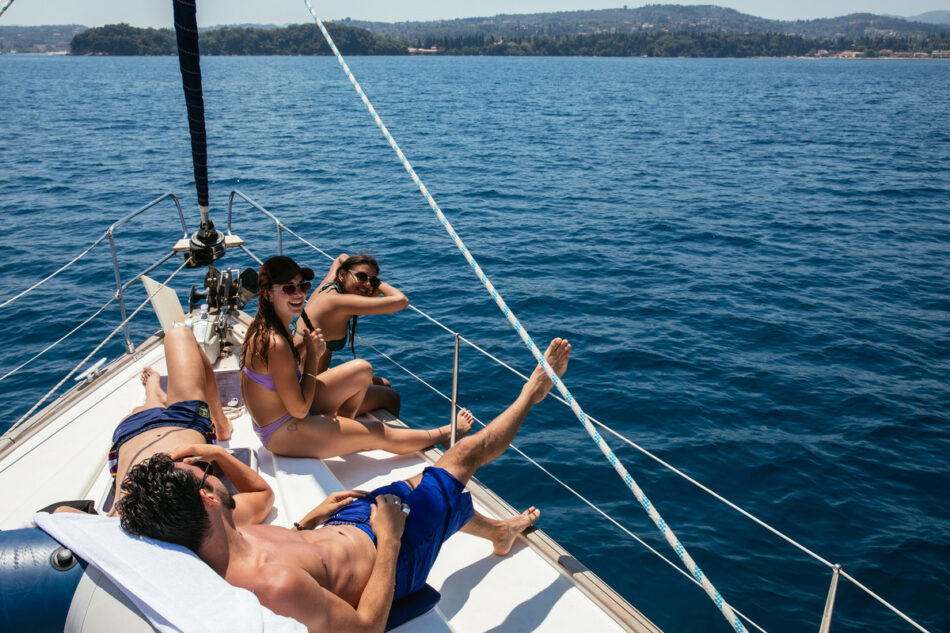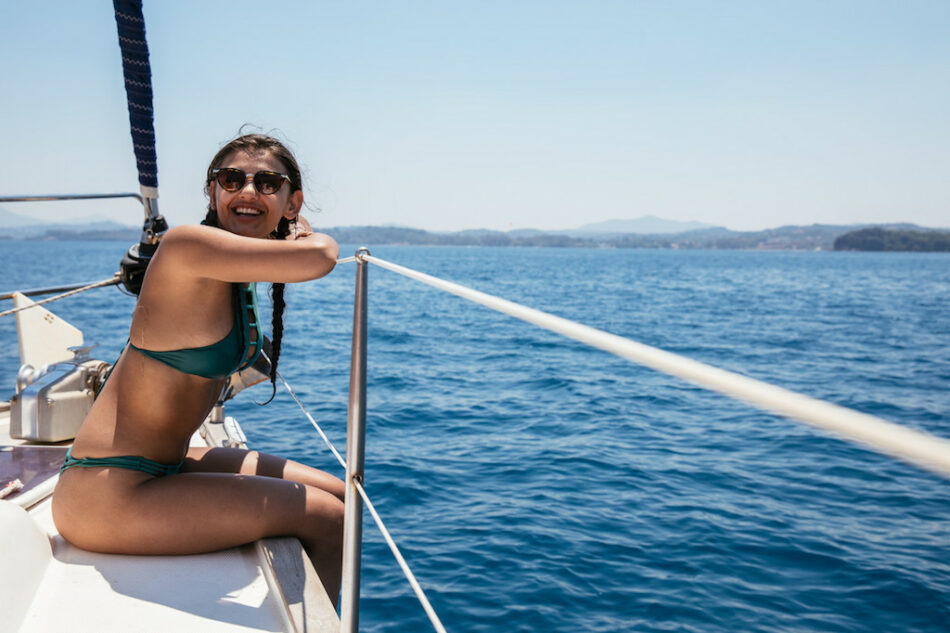
We’re constantly told that over exposure to sunshine is bad for us. Too much sun = sunburn, wrinkles and even skin cancer.
But then we’re also told the vitamin D we get from the sun can also help prevent things like depression, multiple sclerosis and obesity.
So, what’s good and what’s bad? How much sun is too much sun?
With the majority of us ‘living for the summer’ it’s easy to get carried away when we finally get the chance to bask in ‘dem rays. And it goes without saying, sun makes us a hell of a lot happier! But there’s a fine line between getting your dose of happiness and dangerously baking your body – It’s all about finding the medium and ensuring you know when enough is enough.
These are the warning signs and preventions that will give you a balanced golden glow whilst staying healthy and happy
RELATED: WHERE TO CATCH THE WORLD’S BEST SUNSETS

WARNING: No Sweat
If you’re lying in 30 degree rays, it’s expected that you’ll start to sweat it up – it’s just your body’s way of regulating the temperature and cooling yourself down. But if you don’t sweat and instead have a hot, dry feeling, that’s when you know somethings up, and you could well be getting heat stroke. If this happens get yourself out the sun, apply cold water and ice packs to your skin and take this as a sign you’ve taken it too far.
PRECAUTION: Use the correct sun cream
It’s not just any SPF that will protect you from the sun, you need to use a sun cream which has a UVA ‘high’ rating or says, ‘broad spectrum’ on the logo. And make sure you opt for an SPF which is high enough for your skin type, re-applying regularly throughout the day. We recommend La Roche-Posay Anthelios SPF30+, £16.50.
WARNING: Wrinkles
Wrinkles can just be a sign of ageing, but they can also be the effects of too much sun due to the overexposure of UV rays, causing collagen and fibre to break down. Applying the correct sun-cream and eating foods such as oily fish (salmon, mackerel and sardines), eggs and some powdered milks can help to protect your skin, whilst also being sensible with the amount of sun you’re exposing yourself too.
PRECAUTION: Know your tan time
Yes, there is such a thing as too much tan time. Tan time is measured by the melanin (pigment) your body produces – Darker people have more melanin then lighter people, hence why if you have darker skin you can lie in the sun for a longer period of time. But once your body stops producing melanin, you’ve reached your maximum tan time & it’s game over. Skincare expert Dr. Lowe states, “Everyone has their own melanin cut-off, typically two to three hours or much less if you have fair skin”. After this, you’re just subjecting your skin to the risk of UV damage.

WARNING: Rash, bumps or blisters
Get any of the above and you know you’ve gone too far. Heat rash is a clear sign you’ve been exposed to too much sun, and you need to take some time out whilst keeping the affected area dry and wearing loose clothing. Bumps or blisters in areas exposed to the sun can be a sign of sun poisoning. If these are accompanied with a fever, chills or nausea you should get yourself to a doctor ASAP.
PRECAUTION: UV Supplements
You can prepare your body for sunshine with supplements that boost your skin’s natural defence against UV rays. Taking a daily supplement such as a 25g BetaCarotene protects cells from UV induced stress and even improves your ability to tan. No this doesn’t replace sun cream, but it will give you an added layer of protection.
WARNING: Dizzy, Sleepy, Nausea
Dizziness, confusion, fatigue, faint spells, headaches, and a sicky feeling – all of these are signs your body is telling you enough is enough. Listen to it, drink plenty of water and rehydrate yourself in the shade as these are all symptoms which can lead to heatstroke, which is the last thing you want to get from a relaxing holiday.
PRECAUTION: Eat Sun Foods
As tempting as an ice cream on a hot summers day may be, it’s foods that increase lycopene (the skin’s own SPF), that you should be looking for. Antioxidants found in tomatoes and other red and orange fruit and veg (think carrots, oranges etc.) can boost your sun protection by a whopping 33%. And another sun friendly food – dark chocolate! Packed with flavonoids, dark chocolate helps protect against sunburn whilst the caffeine reduces the risk of cancer. Not that we needed any excuse to indulge in chocolate, but if you say so…

